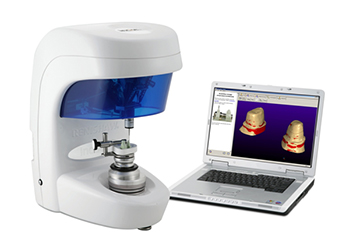
CAD/CAM dentistry (computer-aided design and computer-aided manufacturing in dentistry), is a field of dentistry using CAD or CAM technology to provide a range of dental restorations including: crowns, crown lays, veneers, inlays and onlays, fixed bridges, dental implant restorations and orthodontic appliances.
Difference from conventional restoration
"Chair side" CAD/CAM restoration differs from conventional dentistry in that the prosthesis is typically luted or bonded the same day. Conventional prosthesis, such as crowns, have temporaries placed from one to several weeks while a dental laboratory or in house dental lab produces the restoration.The patient returns later to have the temporaries removed and the laboratory-made crown cemented or bonded in place. An in-house CAD/CAM system enables the dentist to create a finished inlay in as little as an hour in some cases. CAD/CAM restorations are also more conservative in their preparation of the tooth. As bonding is more effective on tooth enamel than the underlying dentin, care is taken not to remove the enamel layer.
Procedure
Typically CAD/CAM dental restorations are milled from solid blocks of ceramic or composite resin that closely match the basic shade of the restored tooth. Metal alloys may also be milled or digitally produced. After decayed or broken areas of the tooth are corrected by the dentist, an image (scan) is taken of the prepared tooth and the surrounding teeth. This image, called a digital impression, draws the data into a computer. Proprietary software then creates a replacement part for the missing areas of the tooth, creating a virtual restoration. This is called reverse engineering. The software sends this virtual data to a milling machine where the replacement part is carved out of a solid block of ceramic or composite resin. Stains and glazes are fired to the surfaces of the milled ceramic crown or bridge to correct the otherwise monochromatic appearance of the restoration. The restoration is then adjusted in the patient's mouth and cemented or bonded in place.
